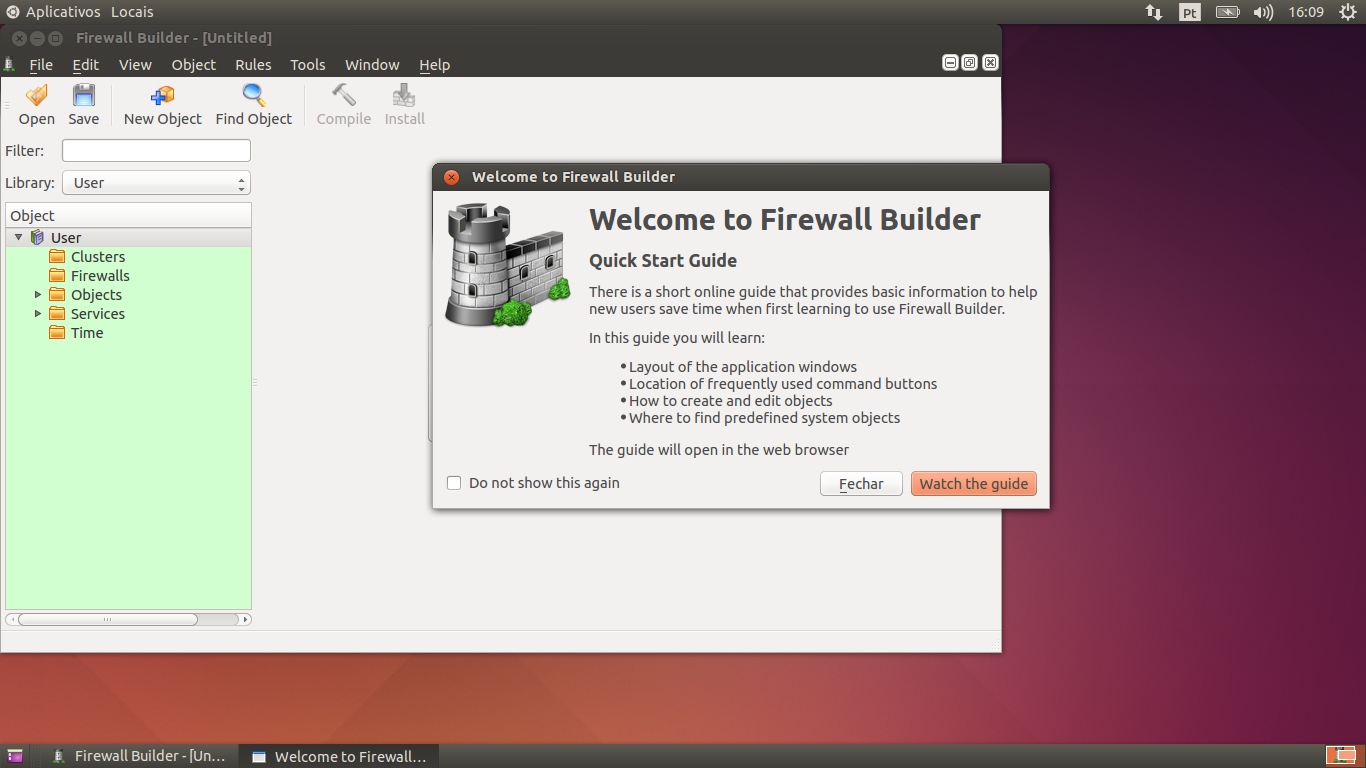
When fwbuilder is fired up, the main window will appear (see Figure 1). Ultimately, the easiest way to start fwbuilder is by using the desktop menu (as shown above). I actually recommend you running fwbuilder without admin privileges (it is not required), so the security of the system is not comprimised.

Why the difference? The former command runs fwbuilder with administrator privileges, the latter wthout. You can start fwbuilder from the command line using sudo fwbuilder or just fwbuilder. In order to start up fwbuilder administrative privileges will be necessary. Once installed, Fwbuilder can be started by clicking System > Administration > Firewall Builder.
#UBUNTU FIREWALL BUILDER INSTALL#
Install fwbuilder with the command sudo apt-get install fwbuilder. Install the fwbuilder libraries with the command sudo apt-get install libfwbuilder. Install the GPG key with the command apt-key add PACKAGE-GPG-KEY-fwbuilder.asc. Open /etc/apt/sources.list in a text editor.Īdd deb maverick contrib to the bottom of that file.ĭownload the GPG key with the command wget. In order to get a working, updated Fwbuilder installed on Ubuntu, follow these steps (You will either have to su to the root user or use sudo for this to work): However, if you’re installing Fwbuilder on Ubuntu, the package that will install is out of date and will not work.
#UBUNTU FIREWALL BUILDER SOFTWARE#
Installation of Fwbuilder is as simple as searching for “fwbuilder” (no quotes) in your Add/Remove Software tool (such as Package-Kit, Synaptic, etc) and marking Fwbuilder for installation. Let’s take a look at using Fwbuilder on Linux, which might just become a life-long affair with a powerful security system. Fwbuilder supports a wide range of firewalls (Cisco ASA/PIX, Linux iptables, FreeBSD’s ipfilter, OpenBSD’s pf, and more), so its rules can be deployed on multiple platforms.
#UBUNTU FIREWALL BUILDER PC#
These latter features may be used to override decisions made by apt-get's conflict resolution system.Fwbuilder is a unique graphical firewall tool that allows the user to create objects and then drag and drop those objects into firewalls, to build a powerful security system for a single PC or a network of PCs. Similarly a plus sign can be used to designate a package to install.

If a hyphen is appended to the package name (with no intervening space), the identified package will be removed if it is installed. The /etc/apt/sources.list file is used to locate the desired packages. All packages required by the package(s) specified for installation will also be retrieved and installed. Each package is a package name, not a fully qualified filename. APT simplifies the process of managing software on Unix-like computer systems by automating the retrieval, configuration and installation of software packages, either from precompiled files or by compiling source code.Īpt-get is the command-line tool for handling packages, and may be considered the user's "back-end" to other tools using the APT library.Īpt-get install is followed by one or more packages desired for installation or upgrading. More information about install using apt-getĪdvanced Package Tool, or APT, is a free software user interface that works with core libraries to handle the installation and removal of software on Debian, Ubuntu and other Linux distributions.


 0 kommentar(er)
0 kommentar(er)
